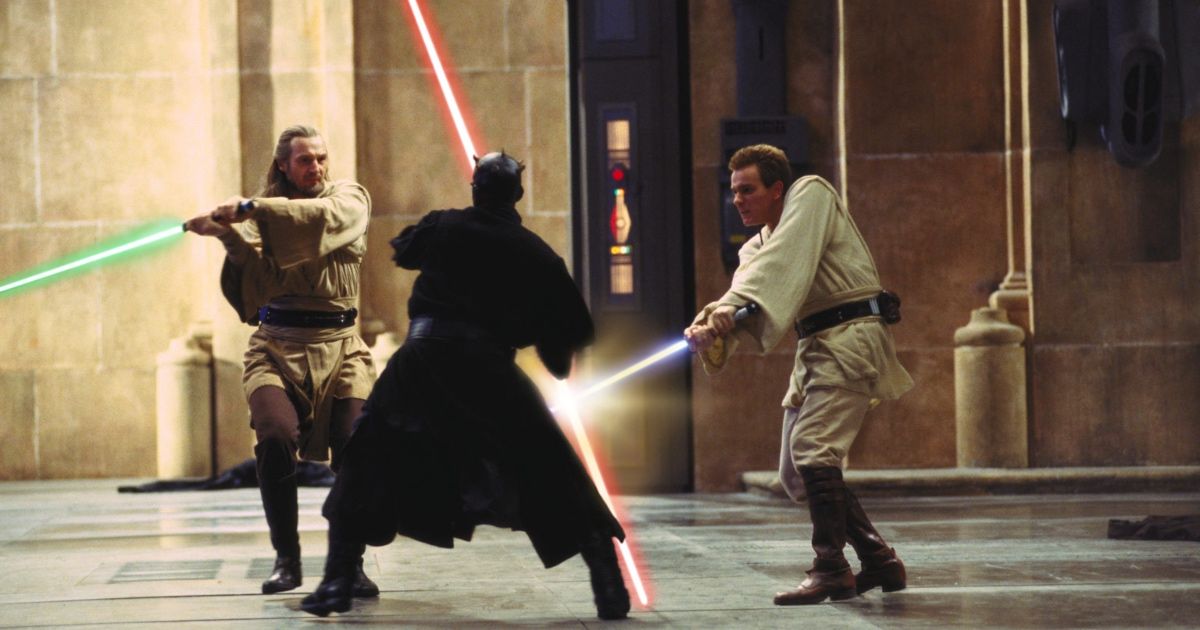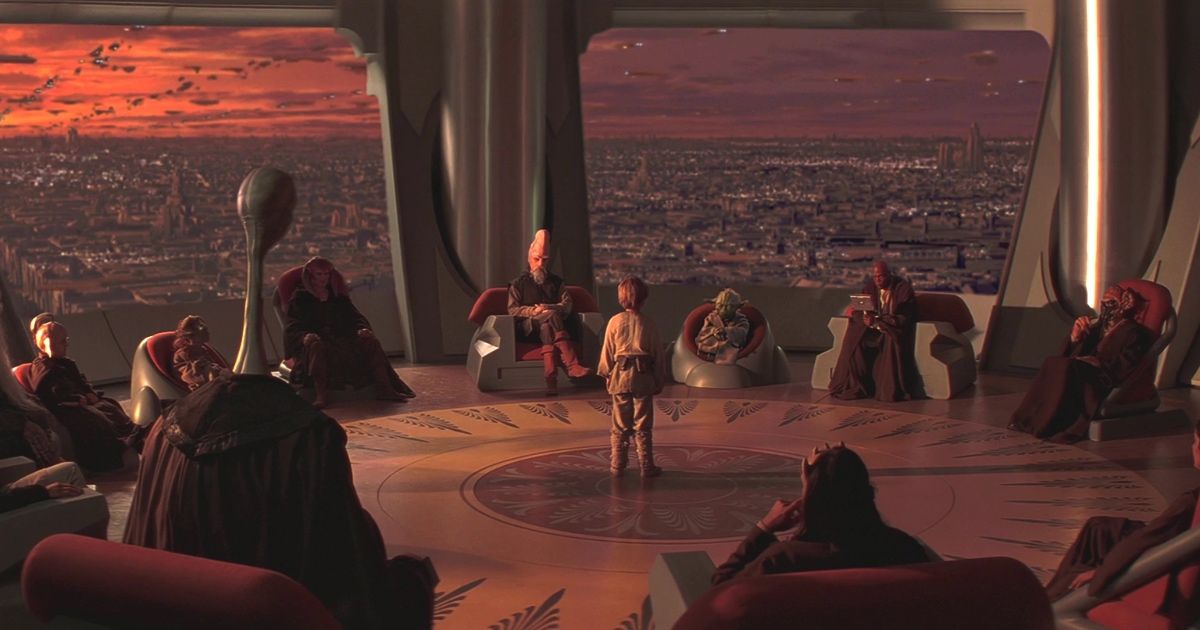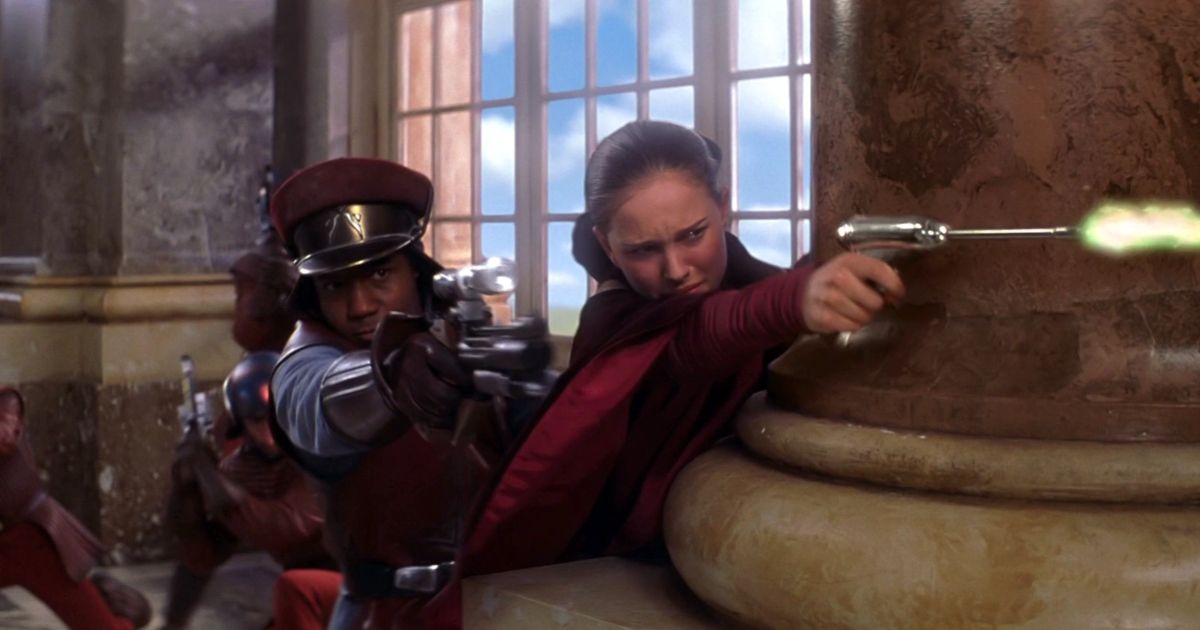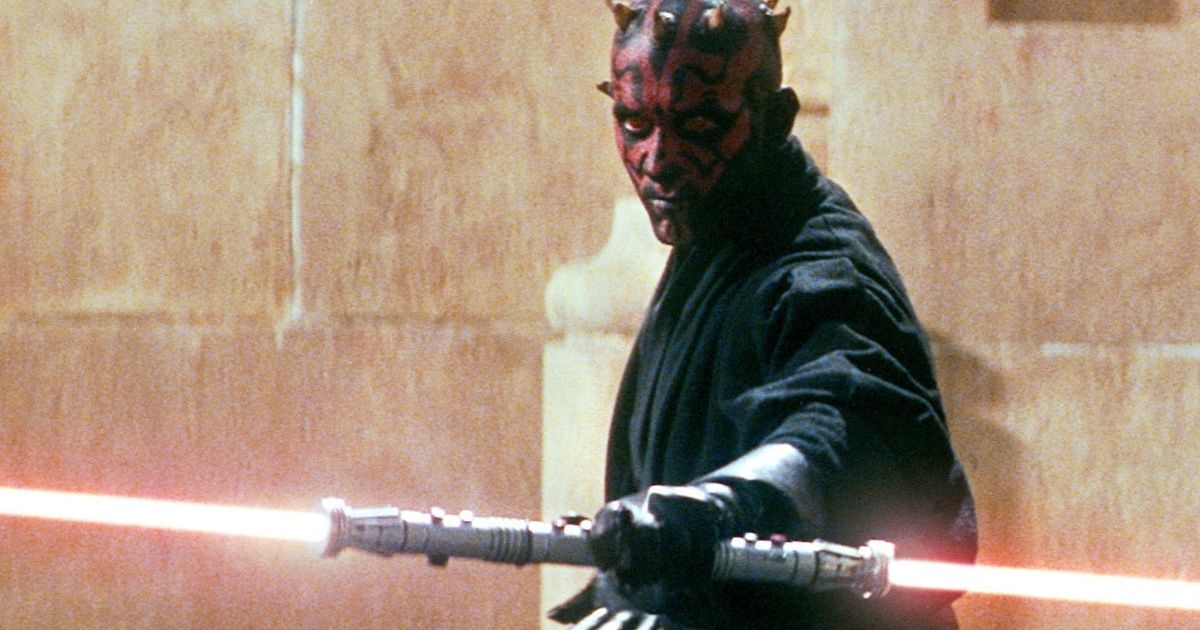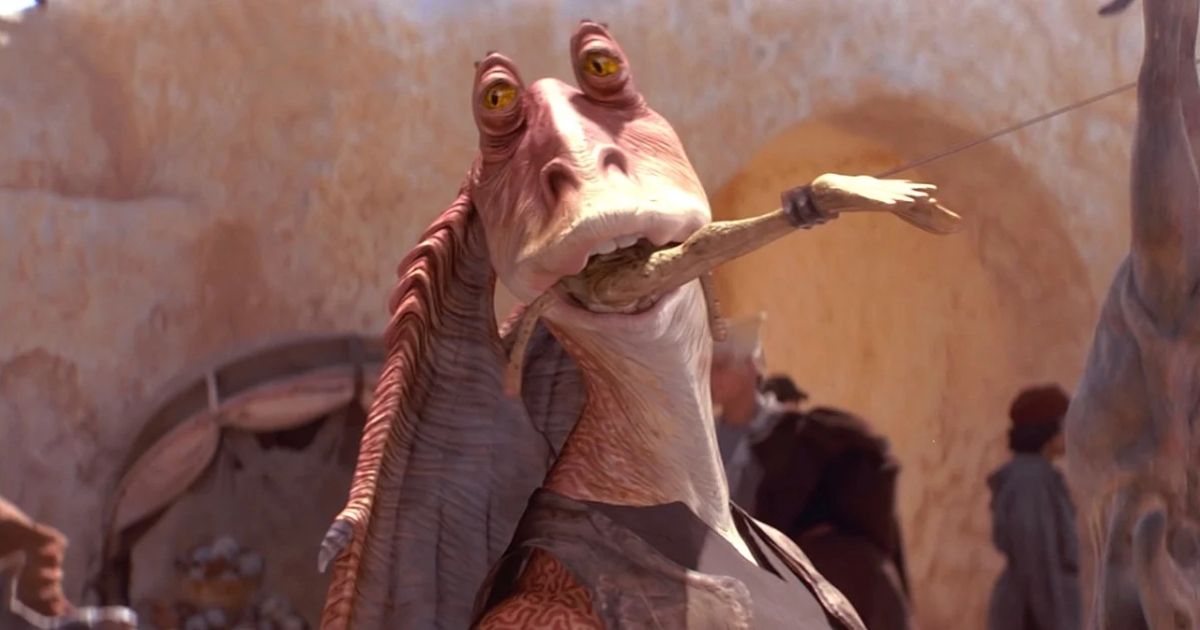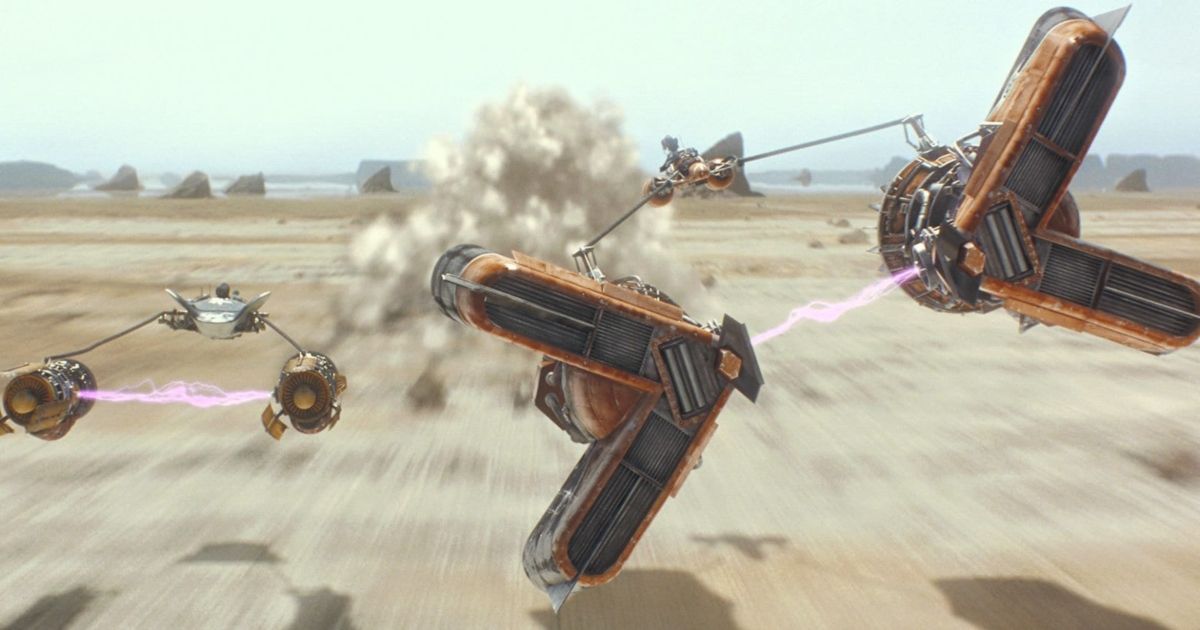The Star Wars prequels have gotten a lot of hate over the years. Upon their release, they were quite divisive, as George Lucas’s telling of the story of Anakin Skywalker, the Clone Wars, and the Fall of the Republic weren’t quite what audiences had expected. At the time, audiences had grown used to the tone and excitement of the original trilogy, and the different approach of the prequels left a bad taste in some fans’ mouths. Although there certainly have been segments of the Star Wars fanbase that have grown to love the prequels, there are still many out there that detest the trilogy.
The first film in the trilogy, Episode I – The Phantom Menace, often has the most naysayers of the three. While there are undoubtedly flaws within the prequels that keep them from achieving the same levels of greatness as the original trilogy, there are also plenty of excellent things about the films as well. The prequels deserve their place in the hearts of Star Wars fans. The Phantom Menace, in particular, lays a foundation for the story that would be told throughout the trilogy. Chronologically, it’s the beginning of the entire Skywalker Saga, and it establishes and builds upon many of the concepts that have defined Star Wars throughout the years. Here are some of the good (and not-so-good) aspects of The Phantom Menace.
Good: Expanding the Galaxy
In the years since the release of Episode VI – Return of the Jedi, Star Wars fans were left to wonder what else was out there in the galaxy far, far away. There had been a lot of expansion through various novels and other stories told through different mediums, but much of that material was only known by the most die-hard of Star Wars fans. As far as general audiences knew, the only Star Wars was that of the original trilogy. However, the titling of those films as episodes IV, V and VI obviously implied that there was more story left to be told through episodes I, II and III. There was a great mystery around what these stories would be and how they would lead to the legend of Luke Skywalker. The Phantom Menace provided the first real exploration of that story, and it was an in-depth re-entry into the universe with the guiding hand of Lucas behind it all.
When it comes to expanding the Star Wars universe and building it beyond what was presented in the original trilogy, The Phantom Menace certainly does not disappoint. It introduces an entirely new era of the galaxy which is vastly different from that of the first three films. While the galaxy in the original trilogy was full of imperial oppression and fear, The Phantom Menace establishes a time before all of that. On the whole, it’s a much happier and more peaceful galaxy. The Jedi weren’t the mythological and nearly extinct figures they were in the original films. They were still at the height of their power, with the Jedi Council operating and overseeing the training of new generations of Jedi. As such, audiences were treated to a more thorough exploration of the Jedi Order and the Force.
In addition to that, The Phantom Menace also more firmly establishes the political landscape of the Star Wars universe. The Galactic Republic is introduced, which allows for plenty of new species, planets, and ideas to be injected into the overall Star Wars canon. There are two crucial new planets explored in the film, the capital-city planet of Coruscant and the peaceful green world of Naboo, while Tatooine is also revisited and shown in a different light. All three planets would play important roles in the following two films. By establishing more new planets and the governing system that oversees the whole galaxy, The Phantom Menace further establishes the Star Wars universe as one that is ever-expansive and lived-in. Despite all the fantasy and science-fiction elements to it, it feels like a real place.
Not-So-Good: Too Much Going On
However, as exciting as all of that new expansion to the galaxy is, it can often overload the film and make it too complicated for its own good. This added complexity, when compared to the original trilogy, is immediately apparent in the opening crawl of the film. The film opens with a discussion about political disputes, the taxation of trade routes, shipping blockades, and the endless debates in the Congress of the Republic. For a series most well-known as a fairly straightforward space adventure, that can be a lot to take in at once. Now, that’s not to say these ideas don’t and can’t work in Star Wars, but with how often The Phantom Menace pitches itself as a movie for kids, it’s just an odd and overly convoluted creative choice.
Even beyond some of the complexities of the film’s individual plot lines, The Phantom Menace also just tries to tackle a few too many stories at once. The movie is often jumping between three or four different storylines with different characters, which can make it hard to follow exactly what is going on. Nowhere is this more apparent than in the climactic fight at the end of the film, which intermixes the fight between the Jedi Qui-Gon Jinn and Obi-Wan Kenobi and the Sith Darth Maul, the Gungan battle with the Trade Federation’s droids, Queen Amidala’s attempt to rescue the people of Naboo and Anakin’s space dogfight above the planet. By constantly cutting between all of these different stories, it’s hard to really get into the flow of each of them. The audience’s attention is being pulled in four different directions, which makes it hard to focus on anything that is happening.
Good: New and Returning Characters
The Phantom Menace does an excellent job of re-introducing audiences to the galaxy of Star Wars through familiar characters while also introducing plenty of new faces. One of the best examples of a familiar character is through that of Ewan McGregor’s Obi-Wan Kenobi, who had previously been played by the legendary Alec Guinness in the original trilogy. McGregor, who was most known at the time for his work on 1996’s Trainspotting, would play Obi-Wan as a young Jedi Padawan who was still learning and growing into the wise Jedi audiences previously knew the character as. The actor’s casting in the role was consistently one of the best parts of the prequel trilogy, and his recent return to the character in the Obi-Wan Kenobi Disney+ series has only further cemented his stamp on the role.
The inclusion of a young Anakin at the center of the story also echoes back to Luke’s role in A New Hope. As a young child on Tatooine, Anakin is swept off into this galactic adventure by an older Jedi who believes he could grow into someone special. While Anakin is notably younger in The Phantom Menace than Luke is in A New Hope, the similarity of their stories still resonates and serves as an example of Lucas’ approach to rhyming the stories of the Star Wars universe. A younger (but still really old) Yoda also plays a small role in the film, and it’s interesting to see how the Jedi Master operated at a time when he was in much more of a leadership role and wasn’t just a hermit living in a swamp.
As for new characters, Liam Neeson’s Qui-Gon Jinn and Samuel L. Jackson’s Mace Windu make solid impressions, even though Jackson isn’t given much to do until the following two movies. However, the character that has certainly lived on beyond The Phantom Menace the most is Darth Maul, which is somewhat ironic considering his end in the film. In the movie, Maul serves as a terrifying and worthy adversary to the Jedi. The character’s red and black design with the horns atop his head instantly makes him one of the most recognizable characters in the Star Wars canon, and that’s even without mentioning his iconic double-bladed red lightsaber. Maul’s duel with Obi-Wan and Qui-Gon at the end of the film is one of the best lightsaber fights in all of Star Wars, and the character has gone on to become one of the most emotionally complex and tragic characters through his inclusion in the animated series Star Wars: The Clone Wars and Star Wars: Rebels.
Not-So-Good: Attempts at Humor
The Phantom Menace does have some good light-hearted moments, but unfortunately, a lot of the humor in the film is a real swing-and-miss. While the original Star Wars films undoubtedly had a lot of humor within them, it was humor that was organically woven into the story. It was little quips and comments characters would make that made sense with their individual personalities. In The Phantom Menace, however, much of the humor is really shoe-horned into the movie in an attempt to just make the kids laugh. It’s not a natural extension of the characters, but rather simple low-hanging fruit jokes that really fail to land.
As much as some people may love him, the biggest example of this kind of humor comes from Jar Jar Binks, the half-witted Gungan that joins the Jedi in their adventures. Whether it be with him catching his tongue in an electric current, obnoxiously screaming at any sign of danger, accidentally dropping bombs that happen to destroy a bunch of battle droids or pretty much everything else he does in the film, Jar Jar is really only there to add a layer of silliness to The Phantom Menace. In that sense, the character serves his purpose, but a vast majority of the humor with the character just falls flat on its face.
It should be noted though, that none of the failures of Jar Jar’s character were the fault of Ahmed Best, the actor who played him. All things considered, Best actually does a really good job of bringing the character to life. He nails the voice and body language of the Gungan perfectly, which is even more impressive considering he was one of the first completely digital characters in a major film. It was really just the writing and use of the character in the story that makes Jar Jar such a drag.
Good: The Advance of Digital Effects
One of the aspects of The Phantom Menace that deserves the most praise is how it utilizes digital effects. When the film was released in 1999, a movie with this level of digital and computer effects was almost unheard of. The Phantom Menace is a movie which just plainly could not have been made any earlier than it was. The prequels tell such a big story with so many planets, aliens, and grandiose settings, that there was really no way that the movies could have been made with the sole use of practical effects. Lucas employs so much usage of digital technology within The Phantom Menace that the wait for the technology to get to the point in which it could believably bring these worlds and creatures to life was a major contributor to the extended time between the original trilogy and the prequels.
There are so many effects within The Phantom Menace that are truly outstanding, and they still hold up wonderfully nearly 25 years after its release. Jar Jar Binks works really well as a digital character interacting with a practical environment; the planet-city of Coruscant and the underwater civilization of the Gungans are beautifully designed and rendered, and the various space battle sequences are excellently choreographed with digital effects.
The biggest example of digital technology being crucial to the film is within the Podracing sequence on Tatooine. Whether it be the design of the various podracers, the environments that they race through, or the gangly and odd looks of all the different alien competitors, the visual effects throughout the entire sequence are truly outstanding. The race itself makes for one of the most nail-biting and exhilarating moments in the entirety of the Star Wars canon, and it simply could not have been brought to life in the way that it was without the use of digital effects. Industrial Light & Magic really blew the roof off what could be done with digital effects in The Phantom Menace, and, if nothing else, the film deserves high recognition in the Star Wars franchise for that.

